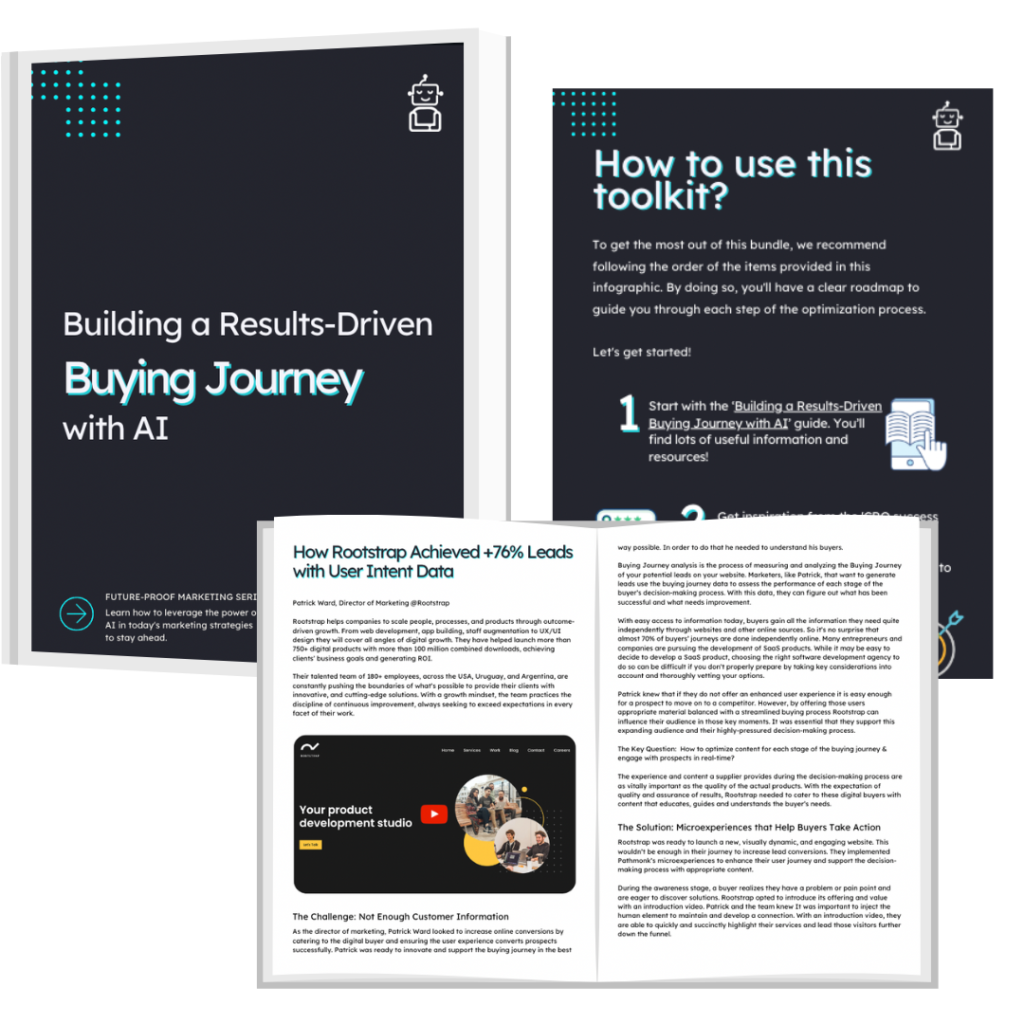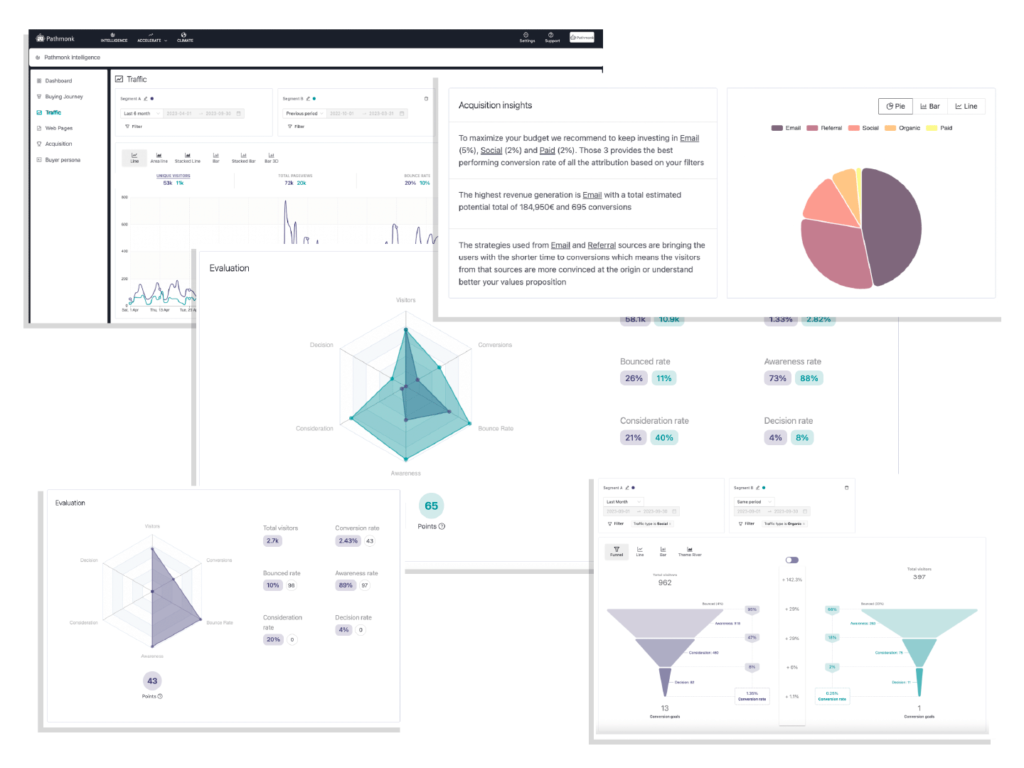Making Changes to a Website? Avoid These Three Traps


Making changes to your website could indeed help drive traffic; keep your site trendy and up to date. However, making changes to a website is no small task. There are several steps involved, and what may appear as minor changes to you can involve a lot more behind the scenes.
The business of updating a website may seem promising at first, but there are hidden traps that can be detrimental to the proper functioning of a business, and even impact revenue. If you are considering website changes, avoid these three traps.
Free AI-Powered Buying Journey Toolkit
Learn how to optimize your buying journey and speed up your revenue with top strategies and invaluable resources.

1. The Money Trap
The goal of most businesses is to make a profit. Well-designed websites can help you do just that. However, spending thousands of dollars making changes to a website can be counterproductive. You may end up spending more money than the changes to the website help you generate.
Changing a website can use up employee resources, preventing your marketing team from focusing on ways to drive profits, and grow the business.
What Costs Are Associated with Making Changes to a Website?
Many people who are trying to change a website are aware of the costs associated with redesigning. External web designers and developers can charge large sums to redesign a website. However, many do not know that waiting for website updates can cost you money too. Several businesses note that they do not see a good return on their investment when making changes to a website.
Various businesses rely on their website to drive revenue through conversion funnels that help convert traffic into potential leads. By making the website unavailable to make changes, fewer leads are generated, and the result is lower sales.
A website redesign can take between 40 and 100 hours for simple design changes. If you intend to make several notable changes to the website, you can expect to wait several months. The cost of waiting for an upgraded website can be potentially devastating.
If you are thinking: “Well, I could save money by doing the site changes myself”, then you are wrong. Making changes to a website without the relevant experience can cause time delays, costing you more money as you lose leads.
2. The Time Trap
Many website design consultants and web developers promise a fast turnaround to upgrade website content. The truth is that website changes usually take between one and a half and six months to execute. This is because while a web designer or developer may meet their promised deadline, there are often things that you need to change.
These delays are directly responsible for the loss of revenue, for businesses that rely on their website for leads.
Reasons Why There May Be Delays Going Live
There are many reasons why there may be delays in a website going live:
- Inconsistencies with data
When moving to a newly upgraded website, data inconsistencies can cause delays with the website going live. This process seldom goes smoothly, so expect delays in this regard.
- Tweaking or adding in new features
It is near impossible to get a website redesign right the first time. There is always information that may need to be changed. While a feature may appear small to you, there is potentially more coding involved behind the scenes, so small tweaks in your website could result in great delays.
- Focusing too much on the small details
Spending too much time fixing the little issues such as the alignment of headers, while ignoring larger issues such as whether the webpage can load on all browser types can delay your website from going live and may even drive potential clients away when the website is eventually launched.
- Poor communication
Web developers and designers rely on the information you provide them. Providing inadequate information, or poor communication can result in delays with changes to your website.
- Rushing through the testing phase
Not testing the website efficiently can lead to major delays in launching it, as you may experience problems later, which can involve more changes.
Redesigning, or changing a website may seem like a quick thing to do, but there are so many issues that can cause delays. Therefore, if you are making upgrades to a website, you should never assume that everything is going to go smoothly. Set realistic expectations, and account for delays.
3. The Results Trap
Many business owners expect changes to a website to result in great increases in revenue. This is untrue. While an engaging website that uses the right tools to convert traffic into leads and ultimately clients, is crucial, unrealistic expectations could cause you to invest large sums of money without seeing the results you expect.
How Much Can You Improve by Changing a Website?
A website can do for a business what no employee can. When a potential client is searching for information about a product or service they are interested in at two in the morning, your website is there to help market your business even if you are not.
However, if your website’s conversion funnel is operating efficiently, there is no need for lengthy changes to your website. A conversion funnel is simply the series of steps that a user takes to become a potential lead. An example of this is signing up for an account or subscription. If this process is running smoothly, and traffic is being converted to leads that become clients, there is no need to change your site.
Helpful Solutions to Make Your Website Drive Revenue
If you need help driving traffic to your website and converting traffic into leads, Pathmonk has several solutions that you can take advantage of. These solutions can help to improve your website without having to make big changes that cost you time and money.
- Web Personalization
Pathmonk provides a platform that creates a personalized experience for users. Website personalization is important as users expect heightened online experiences. Pathmonk does all the hard work for you, so you do not need to spend unnecessary time focusing on personalization.
- Optimize Your Website to Increase Conversion Rates
Using Pathmonk is guaranteed to increase website conversions by up to 1.5 times. Instead of lengthy changes, optimize your website using Pathmonk, a company that has dedicated much time and effort to find the right ways to engage user attention to help convert them to leads.
- Manage Your Pre-Qualifying Leads
With Pathmonk, you can also manage pre-qualifying leads by identifying information about your users, such as the lead source and score, the value of a deal, or the likelihood of the user making a purchase. Artificial intelligence helps determine and match behavioral patterns to prioritize leads that are more likely to convert.
- Improved Landing Pages for High Conversion Rates
Pathmonk can help you achieve a high conversion landing page to increase revenue by up to 40 percent to deliver an outstanding customer experience. You can accomplish this through a lower bounce rate, and direct paths to conversion.
- Efficient and Accurate Reporting
Instead of focusing on making alterations to your website, you should seek to make it more functional instead. You can do this by analyzing data collected through your website. Pathmonk gives you access to detailed reports generated with no extra effort on your part.
You can see the whole picture with the help of these reports. It helps you to see every persona to gain a better understanding of the users that visit your website and make adjustments as you see fit.
- Website Trial
Another helpful way to improve your web redesign efforts is to engage a trial group to try out your website. This can save you lots of time and prevent any delays in your website going live. Conduct surveys and analyze the data you collect from them. This helps to gain a good understanding of how users feel about the changes to your website, and how likely they are to return. If you decide to go ahead and upgrade your website, read this article. It can help you to gain a better understanding of website redesign mistakes made by most companies, and how to fix them.
Conclusion
As we live in a digital age, companies rely heavily on websites to generate leads in ways that human beings just could not. When businesses are faced with issues of poor leads that result in low income, many consider making changes to their websites in the hope that revenue increases.
The misconception can drive disappointing results and ultimately, a negative impact on your overall revenue. Spending large amounts of money and time on website changes can be harmful to your business. Instead of upgrading your website, you should rather seek to optimize it, so it can work to generate more leads. Pathmonk can help you with this.
If you intend to upgrade your website, you should take note of these three traps. The first is the money trap. It encourages you to invest your money, and employee resources into making changes to a website. Secondly, is the time trap that promises results in record time. The last is the results trap that promises unrealistic results.
Intuitive Cookieless Analytics for Your Web
Understand your customer journey, find drop-offs, and receive actionable insights with AI.






